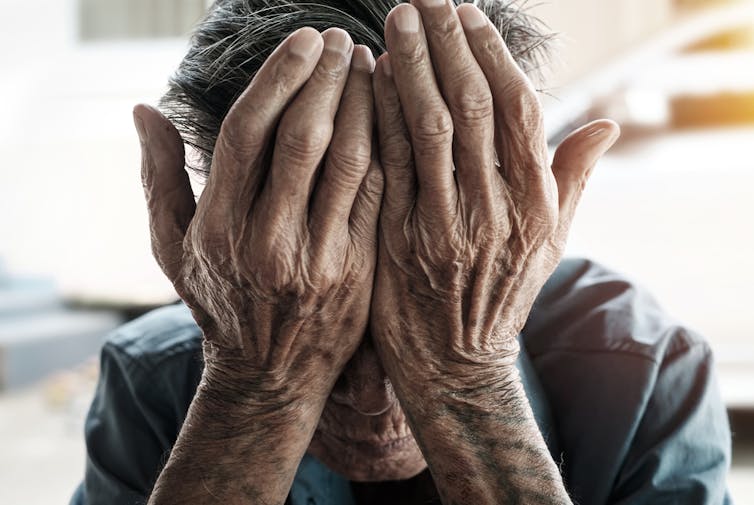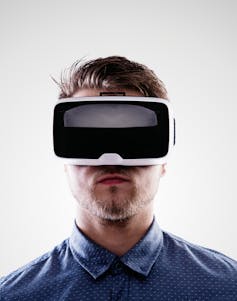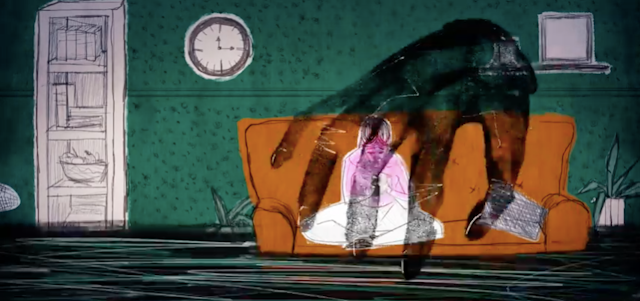How do you translate a complex and turbulent inner state into a visual medium like film, animation or virtual reality? Mental abuse is a widespread but often hidden phenomenon that is extremely difficult to articulate. But it is a challenge the Mental Abuse Matters project (MAM) embraces, aiming to raise awareness by telling stories through animation and virtual reality (VR). In attempting to capture the visceral experience of an abusive relationship, these films can foster understanding and empathy and hopefully prevent further abuse.
The spectrum of mental abuse is wide: it happens in couples, between parents and children, with peers, friends and colleagues. It can take many forms, from verbal abuse and intimidation to coercive control and gaslighting, a form of psychological manipulation that seeks to sow seeds of doubt and make someone question their own memory, perception and sanity. Using persistent denial, misdirection and lying, gaslighting attempts to destabilise the victim and undermine their sense of self.
It can affect people of all ages and genders across all backgrounds. Often a precursor to physical abuse, family breakdown and financial destitution, it is also linked to health problems such as anxiety, depression, suicidal thoughts and self-harm. Yet this form of abuse is only now beginning to be acknowledged and is still poorly understood by the medical, caring, law and justice professions that are confronted with it every day.
Bringing stories to the screen
As a filmmaker who has experienced mental abuse and had to deal with an uncomprehending medical and legal system, I set up Mental Abuse Matters to produce creative projects that try to articulate and understand the experience of mental abuse. The intention is to explore different means of creative expression and discover how they inform understanding and empathy in the viewer.
Part of the challenge is the subtle and intangible nature of mental abuse as a phenomenon – both in terms of the perpetrator’s behaviour and the effect it has on victims. There are no physical marks. Public behaviour is often very different from private behaviour, so witnesses are rare. What may seem an ideal relationship from the outside can be a disorientating nightmare behind closed doors, and the victims themselves are so confused about what they are feeling and experiencing that articulating it seems impossible.
I decided to make a short animated film based on anonymous first-person testimony as the charity’s first creative piece. When dealing with these stories confidentiality and protection are key, and animation allows for anonymity. I was also interested in exploring questions of format, representation – of victims and perpetrators – and emotional reaction in the viewer.
For example, does the distance afforded by animated characters and scenarios allow for a more relatable film, compared to live action using actors? Does an emotionally abusive relationship have common patterns that victims and perpetrators watching might recognise, and could this influence their own awareness and behaviour?

The first step in developing a five-minute animated film was to find someone who had experienced mental abuse and was willing to tell their story. This was a difficult task, and many decided they were not ready or did not want to take the risk. Eventually, I met someone who had recently left an emotionally abusive relationship. As a filmmaker, this was an ethical challenge because it was clear that the experience was still extremely raw for her; was it too soon to expect her to revisit and have a perspective on the trauma she had just experienced?
The next task was to find an animation style that would do justice to the narrative. I knew I didn’t want “clean” animation – pristine, cartoony perfection. The form itself had to communicate the feeling of confusion and uncertainty, and be able to transmit a real sense of tension. These would feed into representing feelings described as “the ground shifting beneath your feet”, or “having your identity rubbed out” – key experiences for victims. I chose Belfast-based company Enter Yes because I felt that their animation work had creative soul with a hand-drawn style I admire. They also had an interest in social issues, which was important for motivation and engagement.
Our resulting animation is testament to a free-flowing collaborative process and vividly represents the internal experience of mental abuse. Our anonymous contributor said she felt it was “an empowering experience that honoured her words”. The film has been praised by The Men’s Advisory Project, a counselling service for men who are victims of domestic abuse, and will also be shown at their conference this autumn.
MAM’s VR project
The next step is a live-action VR experience where the user is put in the position of a victim experiencing an episode of emotional abuse. Using actors, this will be a ten-minute scripted scenario of partner abuse where the user is virtually embodied.

We will use immersive sound to enhance the physiological and emotional responses of the user, attempting to elicit the bodily sensations that accompany emotions such as shame, panic and humiliation. The intention is to produce a prototype that can eventually be used as a therapeutic VR experience for victims and perpetrators of mental abuse, and a training tool for frontline medical and care staff to improve trauma care.
The challenge of depicting mental abuse in a visually creative way has led me as a filmmaker to explore new forms of expression, such as animation and immersive technology, seeking to create tools that are cathartic, informative and helpful for victims, perpetrators and care professionals.
This kind of accessible film project can lead to a new perspective on healthy relationships, and expands upon an already fruitful relationship between filmmaking, psychology and healthcare.

